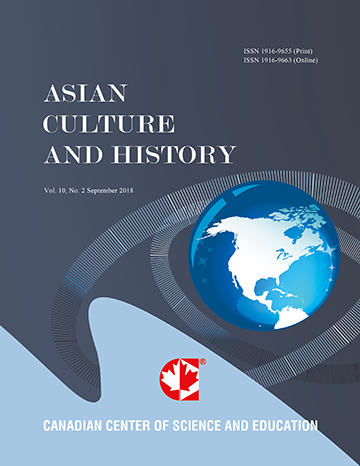Sakizaya or Amis? ? a hidden ethnic group in Taiwan?
- Shih-hui Lin
Abstract
<!-- /* Font Definitions */ @font-face {font-family:SimSun; panose-1:2 1 6 0 3 1 1 1 1 1; mso-font-alt:??; mso-font-charset:134; mso-generic-font-family:auto; mso-font-pitch:variable; mso-font-signature:3 135135232 16 0 262145 0;} @font-face {font-family:????; panose-1:2 2 3 0 0 0 0 0 0 0; mso-font-alt:PMingLiU; mso-font-charset:136; mso-generic-font-family:roman; mso-font-pitch:variable; mso-font-signature:3 137232384 22 0 1048577 0;} @font-face {font-family:???; panose-1:3 0 5 9 0 0 0 0 0 0; mso-font-charset:136; mso-generic-font-family:script; mso-font-pitch:fixed; mso-font-signature:3 137232384 22 0 1048577 0;} @font-face {font-family:"\@???"; panose-1:3 0 5 9 0 0 0 0 0 0; mso-font-charset:136; mso-generic-font-family:script; mso-font-pitch:fixed; mso-font-signature:3 137232384 22 0 1048577 0;} @font-face {font-family:"\@????"; panose-1:2 2 3 0 0 0 0 0 0 0; mso-font-charset:136; mso-generic-font-family:roman; mso-font-pitch:variable; mso-font-signature:3 137232384 22 0 1048577 0;} @font-face {font-family:"\@SimSun"; panose-1:2 1 6 0 3 1 1 1 1 1; mso-font-charset:134; mso-generic-font-family:auto; mso-font-pitch:variable; mso-font-signature:3 135135232 16 0 262145 0;} /* Style Definitions */ p.MsoNormal, li.MsoNormal, div.MsoNormal {mso-style-parent:""; margin:0cm; margin-bottom:.0001pt; mso-pagination:none; font-size:12.0pt; font-family:"Times New Roman"; mso-fareast-font-family:????; mso-font-kerning:1.0pt;} /* Page Definitions */ @page {mso-page-border-surround-header:no; mso-page-border-surround-footer:no;} @page Section1 {size:612.0pt 792.0pt; margin:72.0pt 90.0pt 72.0pt 90.0pt; mso-header-margin:36.0pt; mso-footer-margin:36.0pt; mso-paper-source:0;} div.Section1 {page:Section1;} /* List Definitions */ @list l0 {mso-list-id:711685206; mso-list-type:hybrid; mso-list-template-ids:-528178046 441122604 67698713 67698715 67698703 67698713 67698715 67698703 67698713 67698715;} @list l0:level1 {mso-level-tab-stop:36.0pt; mso-level-number-position:left; text-indent:-18.0pt;} ol {margin-bottom:0cm;} ul {margin-bottom:0cm;} -->Amis, one of the Austronesian languages, is spoken by the largest indigenous minority on the island of Taiwan. The population is estimated to be 140,000. The Amis language is spoken mainly in Hualien and Taitung, the eastern part of Taiwan. In 1990s, a Japanese linguist Tsuchida (1989) provided a set of categorization for the Amis language:
1. Sakizaya dialect
2. Northern dialect (Nansi Amis)
3. TavaLong-Vataan dialect
4. Central dialect (Coastal and other Soukuzun Amis)
5. Southern Amis (Puyuma Amis and Hanchan Amis)
From the categorization above, Sakizaya belonged to a subcategory of Amis. At the same time, this categorization also reflected that from the “Takobowan Incident” in 1878 the exiled Sakizaya, in order to escape the ethnic cleansing by Qing government, living among the Amis, were simply a subgroup of the larger ethnic group, and so Sakizaya were classified as Amis from then on. The Sakizaya, as a distinct ethnic group, officially did not exist.
However, not only historical materials show the term Sakizaya were known to the Spanish and to the Dutch East India Company during the 17th century (Hsu, Liao and Wu, 2001), but also the language data collected in this paper show there are differences between Sakizaya and Amis. (Both Nansi Amis and Sakizaya are spoken mainly in northern Hualien. This paper will further make examples of the phonological, morphological and syntactic differences between Sakizaya and Nansi Amis.) However, it is still difficult to define whether Sakizaya is not a dialect of Amis, but a language.
In January of 2007, Sakizaya was officially recognized as Taiwan’s 13th Indigenous Group in Taiwan and one of the most important claims used by the Sakizaya elites in the process of ethnic reconstruction was the language. It seems to me that this ethnic reconstruction is motivated rather by the current Taiwan political environment than the ethnic group itself. It follows that it may occur that the language has been only an instrument to achieve political ends, but - no matter whether true or not - a much more in-depth study is still necessary to determine the status of the language and its relation to other languages, such as Amis, to make a final judgment on the whole process of ethnic reconstruction – Sakizaya case.
- Full Text:
 PDF
PDF
- DOI:10.5539/ach.v2n1p116
Journal Metrics
Google-based Impact Factor (2017): 5.42
h-index (January 2018): 11
i10-index (January 2018): 21
h5-index (January 2018): 6
h5-median (January 2018): 9
Index
- Academic Journals Database
- CNKI Scholar
- COPAC
- EconPapers
- Elektronische Zeitschriftenbibliothek (EZB)
- Excellence in Research for Australia (ERA)
- Genamics JournalSeek
- Google Scholar
- Infotrieve
- LOCKSS
- MIAR
- NewJour
- Open J-Gate
- PKP Open Archives Harvester
- Publons
- RePEc
- Scilit
- SHERPA/RoMEO
- Standard Periodical Directory
- Technische Informationsbibliothek (TIB)
- The Keepers Registry
- Universe Digital Library
- WorldCat
Contact
- Ivan YongEditorial Assistant
- ach@ccsenet.org
